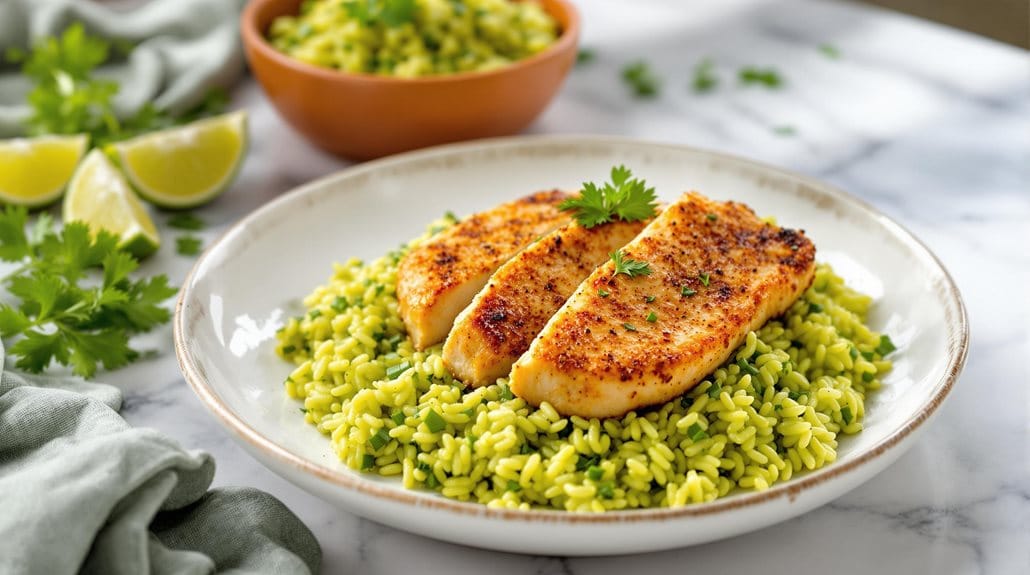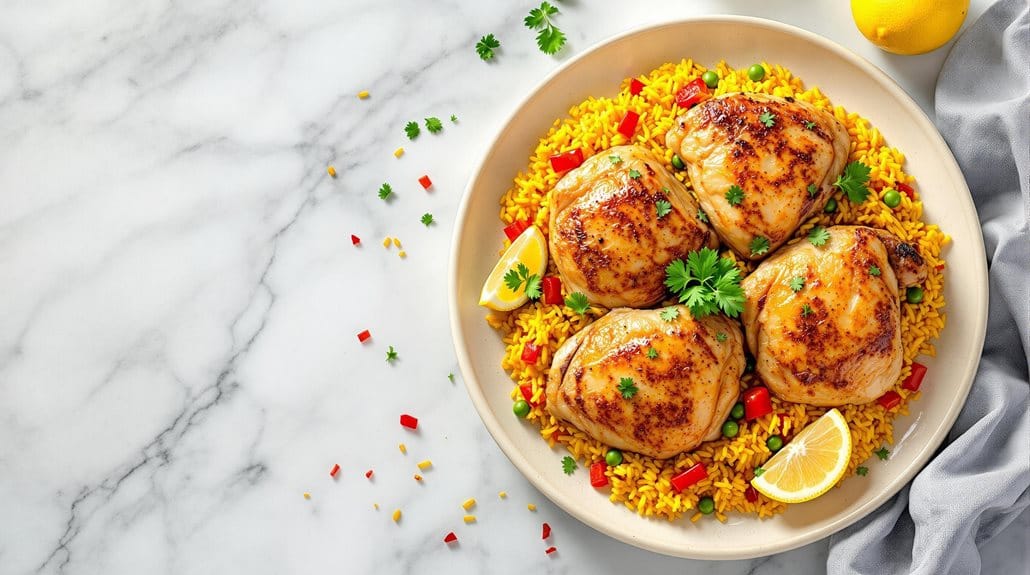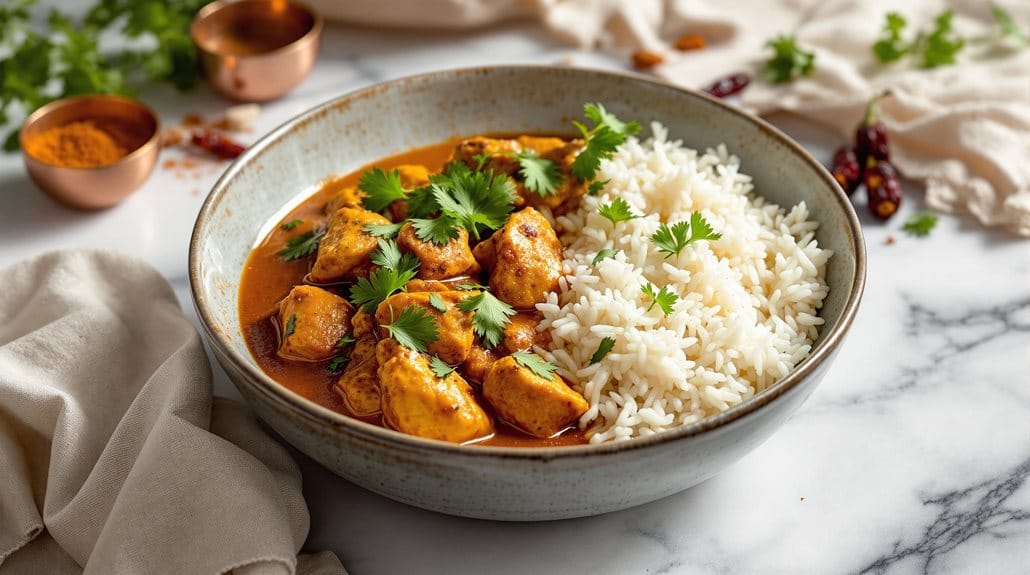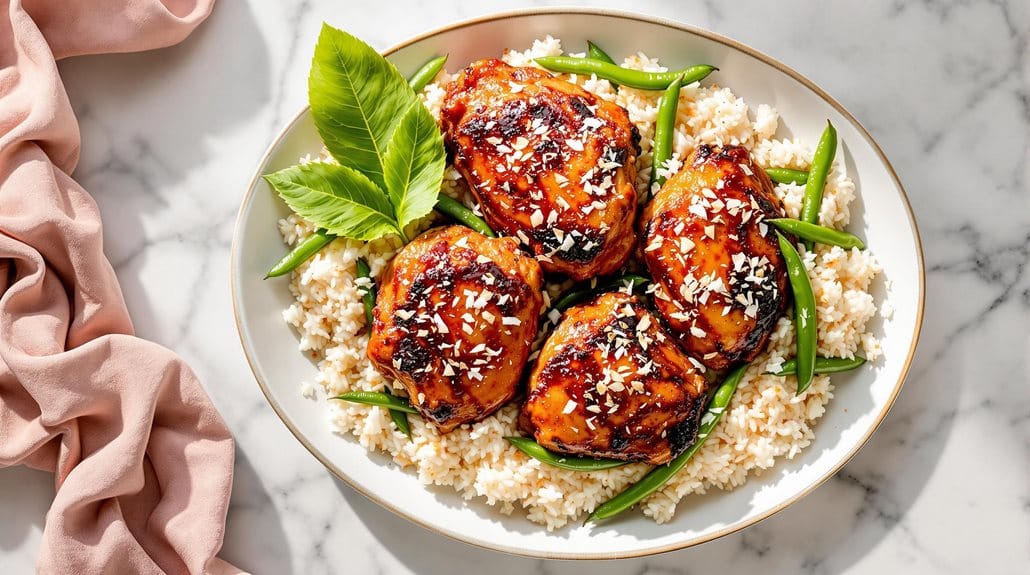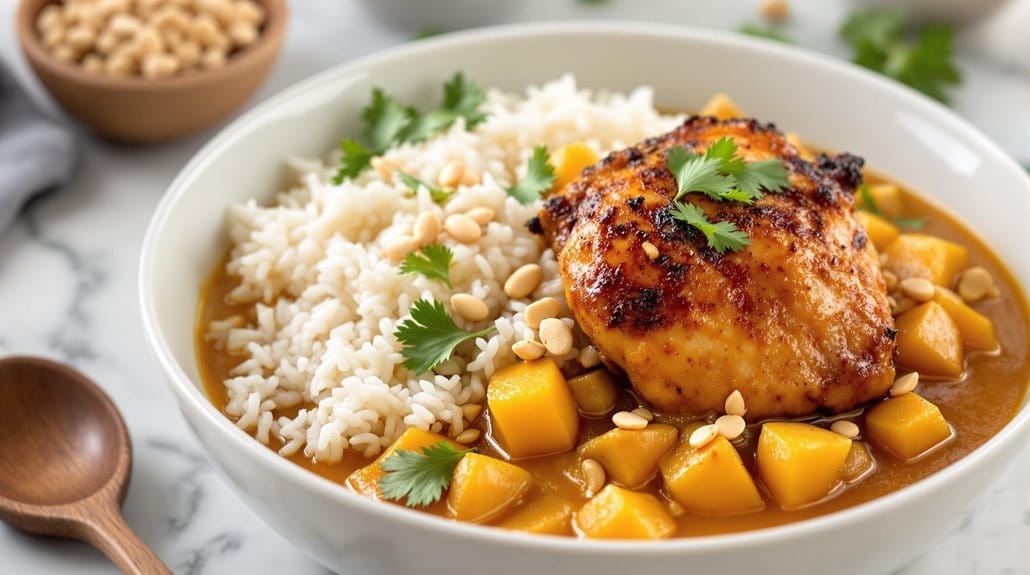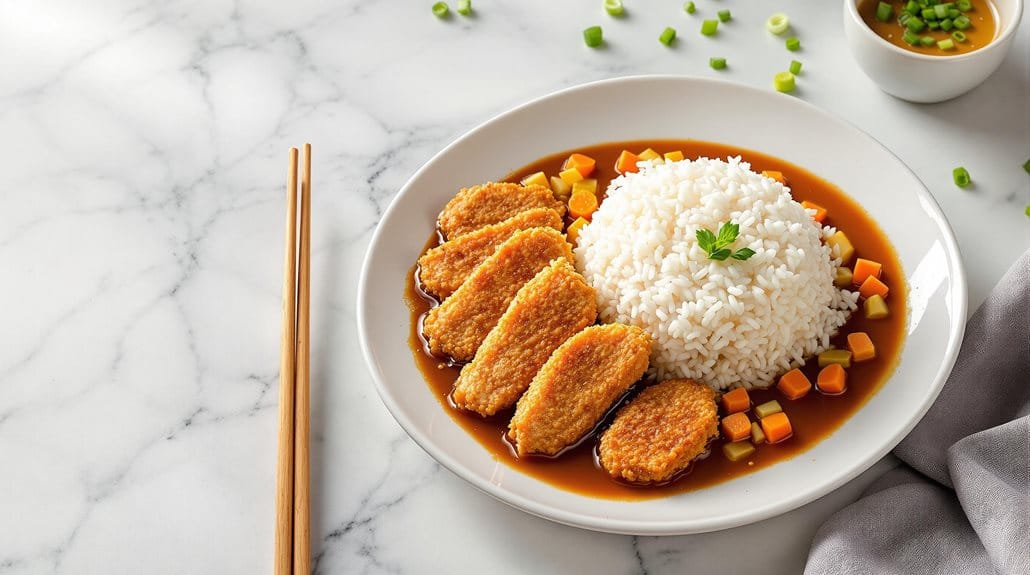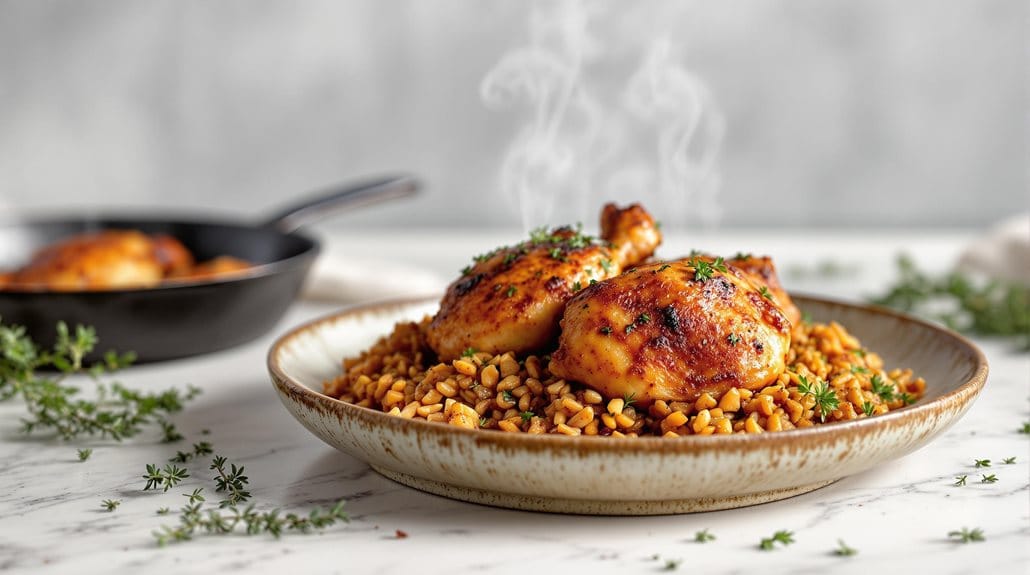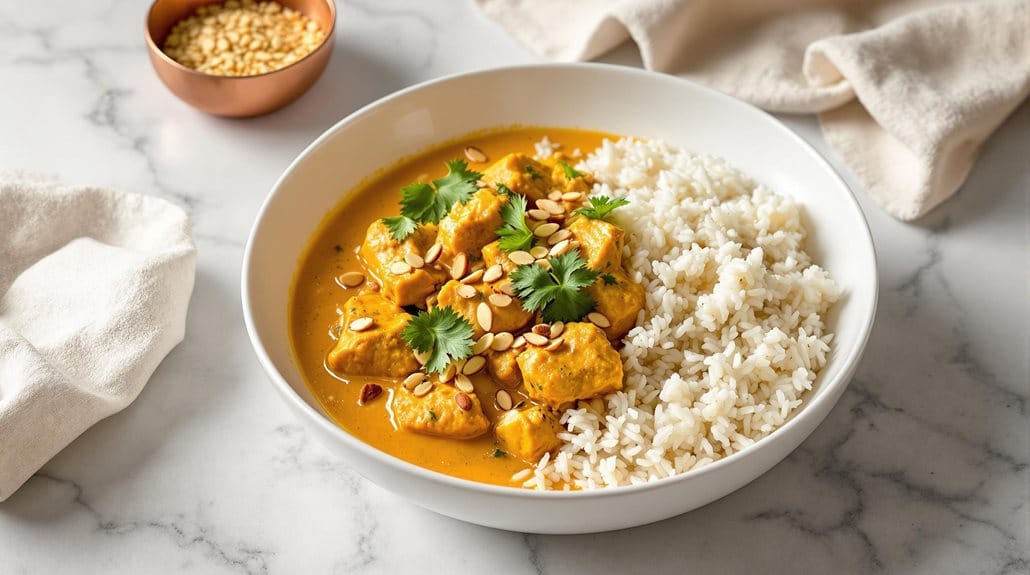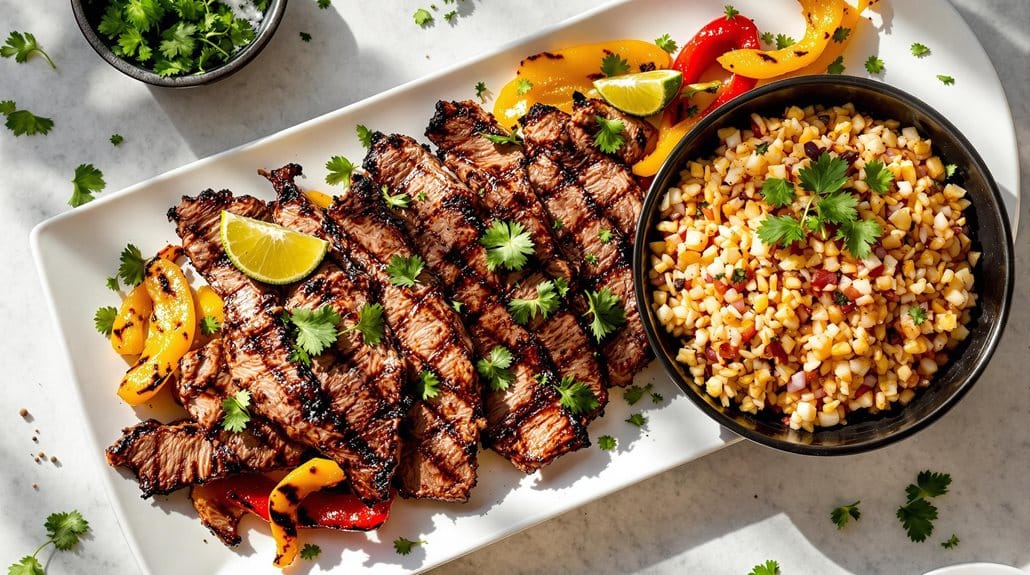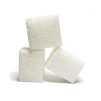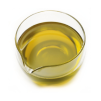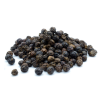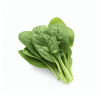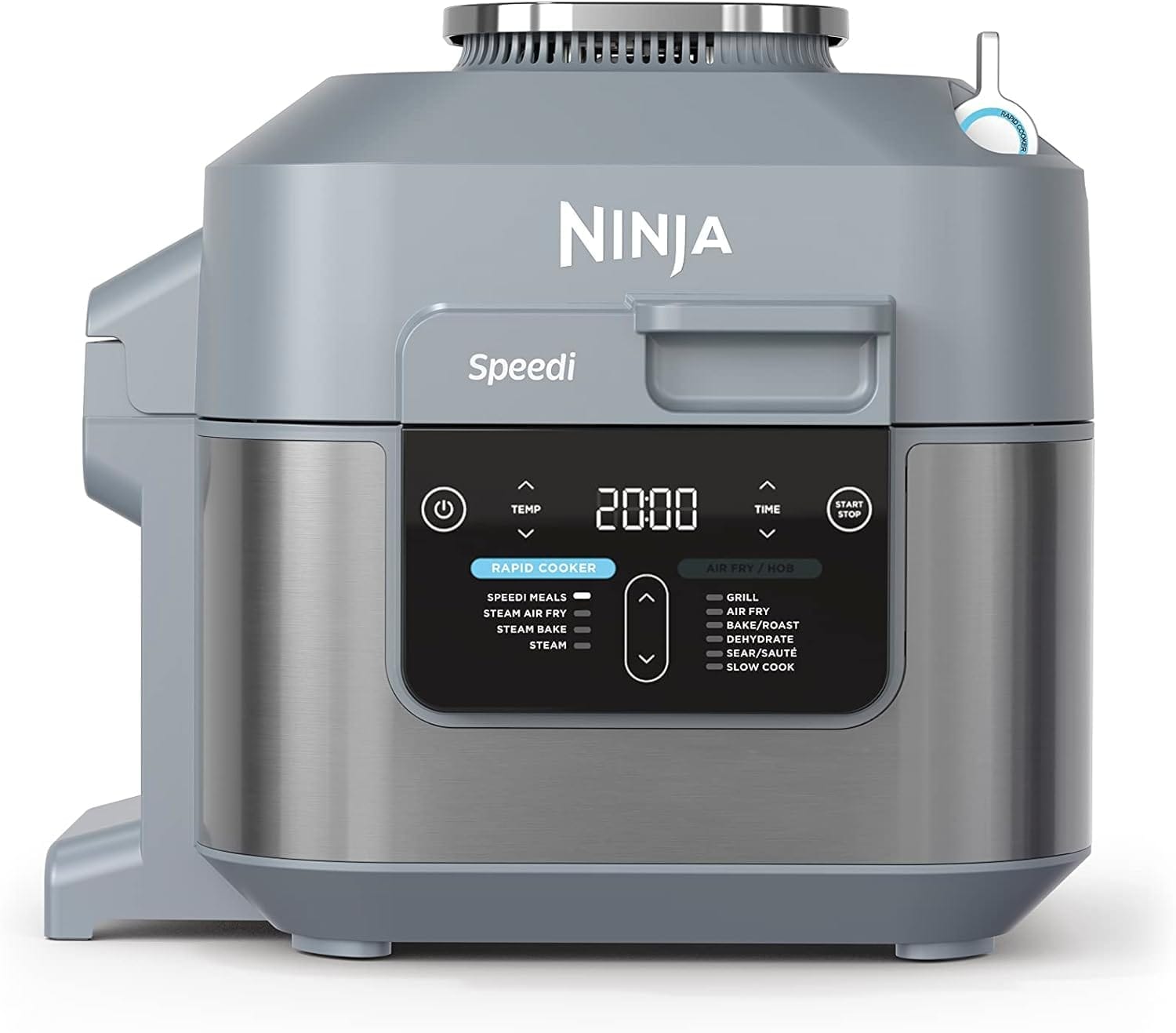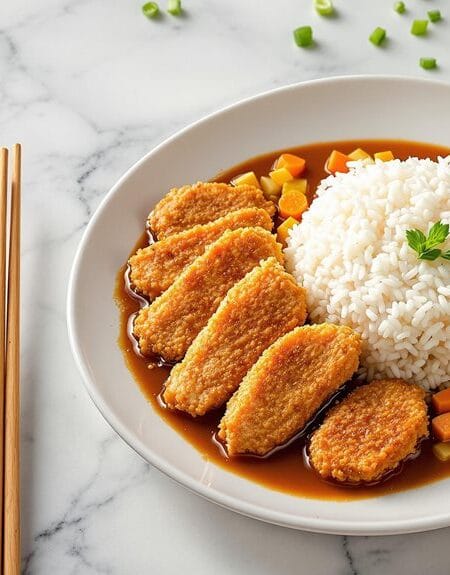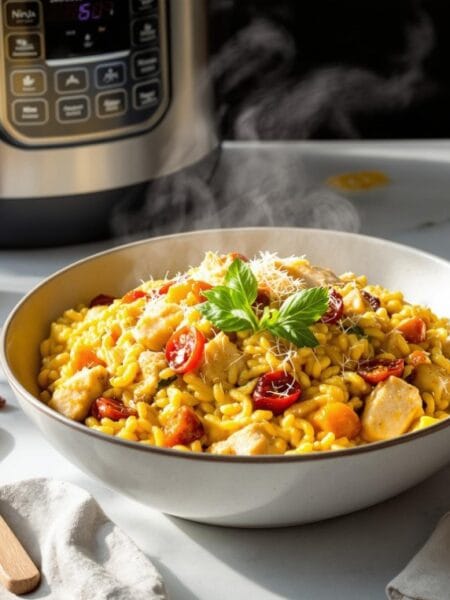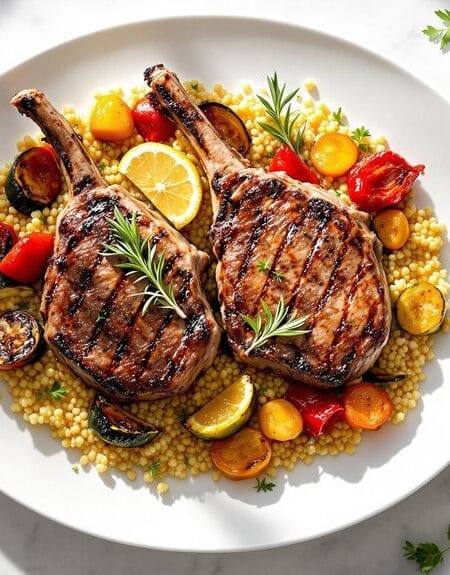| This Thai Red Curry Salmon combines the richness of coconut milk with aromatic curry paste, all cooked to perfection in the Ninja Speedi’s innovative dual-heat zones. The restaurant-quality dish comes together in under 30 minutes, making it perfect for busy weeknight dinners or when you want to impress guests without spending hours in the kitchen. For the best results, allow your salmon to reach room temperature before cooking to ensure even heat distribution and perfectly flaky texture. |

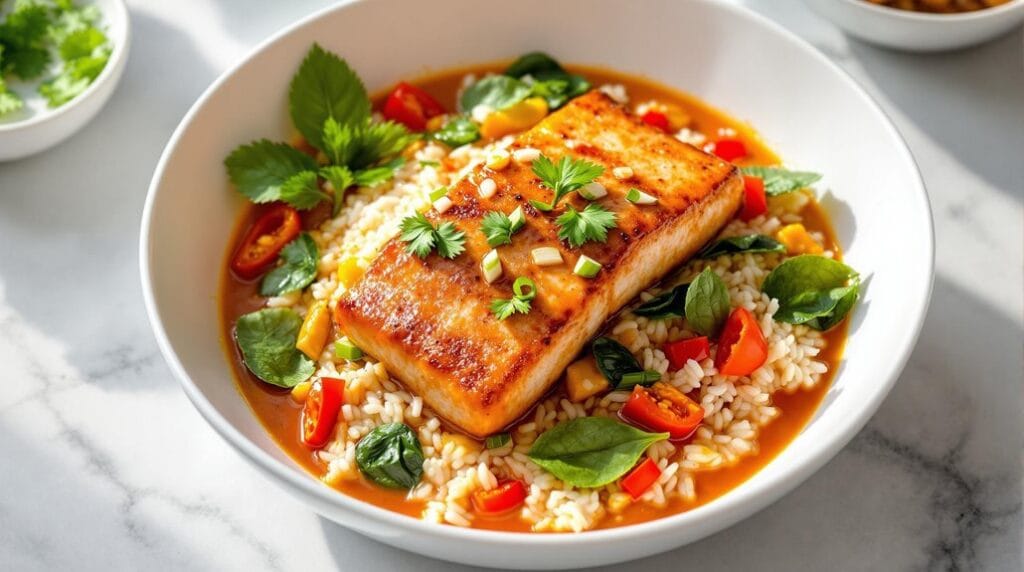
Thai Red Curry Salmon with Coconut Rice in Ninja Speedi
Description
A vibrant and aromatic dish combining the rich flavours of Thai red curry with perfectly cooked salmon, served over fluffy jasmine rice.
The Ninja Speedi's dual-cooking capability allows the curry sauce and rice to simmer below while the salmon crisps to perfection above.
This quick and satisfying meal brings restaurant-quality Thai cuisine to your home kitchen, with the curry sauce infusing both the tender salmon and fragrant rice with authentic Southeast Asian flavours.
Ingredients
Instructions
Bottom Pot:
- Combine coconut milk, water, curry paste, fish sauce, and sugar in the pot.
- Add rice and sliced bell pepper, stir to combine.
- Place kaffir lime leaves on top if using.
Crisping Tray:
- Pat salmon fillets dry and brush with oil.
- Season with salt and place skin-side down on the crisping tray.
Cooking:
- Select Speedi Meals function, set temperature to 180°C.
- Set timer for 15 minutes.
- When 5 minutes remain, add spinach to the bottom pot.
- Once complete, let rest for 2 minutes before serving.
Note
Extra Tips: For best results, verify salmon fillets are similar in thickness for even cooking.
The curry sauce can be adjusted for spiciness by varying the amount of curry paste.
If the sauce is too thick, add a splash of water during cooking.
Garnish with fresh coriander, Thai basil, and lime wedges before serving.
The skin should crisp up nicely, but if you prefer it crispier, cook for an additional 2-3 minutes.


